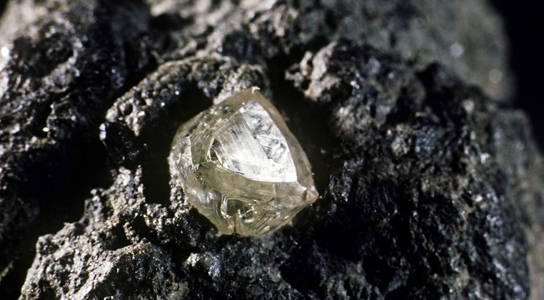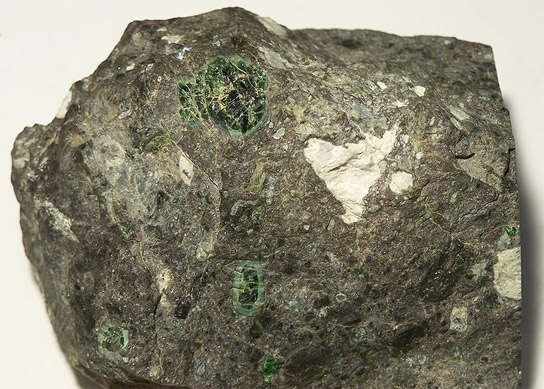
Diamond eruptions are fueled by vast amounts of carbon dioxide rising from the molten rock surrounding the gems.
It has been demonstrated experimentally that a diamond’s trip from deep below the Earth’s surface must be very quick, since lab tests have shown that the gems would burn up in a matter of days, if not hours, if left in the harsh conditions found in the inner crust. The eruptions of diamonds are driven by massive quantities of carbon dioxide fizzing up from the molten rock that surrounds the gems.
It’s hard to explain why diamonds, which are embedded in dense volcanic rock called kimberlite, named after the South African town where the first diamond mines were discovered, become buoyant enough to rise so rapidly through the Earth’s crust. Researchers have long suspected that volatile substances dissolved in the rock, like water and carbon dioxide, play a role in kimberlite explosions. However, they have been baffled as to why these substances begin to froth out of the mantle, as pressures there are typically high enough to keep gases locked up in the molten rock.

New lab tests led by Kelly Russell, a volcanologist at the University of British Columbia in Vancouver, Canada, and his colleagues have shown that in molten rock that’s rich in carbonates, carbon dioxide is exceptionally soluble. In rocks that are rich in silica, carbon dioxide is only between one-fourth and one-third as soluble, regardless of the ambient pressure. In tests where researchers sprinkled orthopyroxene, a silica-rich mineral, onto molten, carbonate-rich rock, the carbon dioxide vigorously bubbled out.
Researchers have hypothesized that this is exactly what’s going on in the inner crust, as carbonate-rich molten rock comes in contact with silica-rich minerals somewhere in the upper mantle, causing carbon dioxide to fizz out, rendering the dense magma somewhat buoyant. As the magma surges upward from the upper mantle, it makes its way into overlying rocks that contain even more silica, causing it to accelerate even further. The frothy kimberlite could reach the Earth’s surface from a depth of 75 miles (120 kilometers) in 3 to 8 hours.
This chemical reaction is basically self-sustaining, because of the nature of the rocks surrounding it at lower depths.









Be the first to comment on "Diamonds Are Like the Earth’s Champagne Corks"